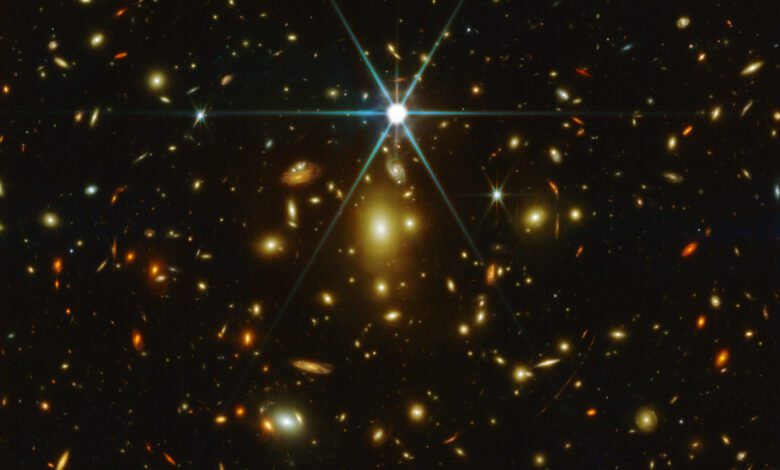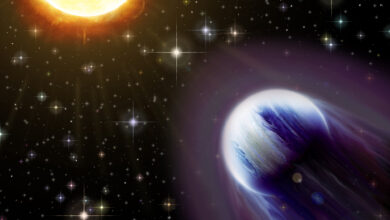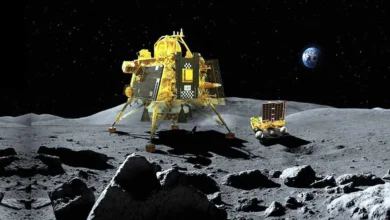Farthest star ever seen: Earendel’s ancient radiance revealed by James Webb Space Telescope
Earendel, a massive B-type star, is more than twice as hot as our sun and about a million times more luminous.

James Webb Space Telescope (JWST) has unlocked the secrets of the cosmos by capturing a glimpse of a star named, Earendel. Situated in the Sunrise Arc galaxy, this dazzling celestial body, first detected by the Hubble Space Telescope, is believed to have emerged within the initial billion years following the event known as the Big Bang.
Earendel possesses a temperature more than twice that of our sun and radiates light a million times brighter. This discovery was facilitated by the gravitational lensing phenomenon. This cosmic trick occurs when the immense gravitational pull of an object in the foreground – in this case, the galaxy cluster WHL0137-08 – acts like a lens, bending and amplifying the light from a more distant entity.
The Near-Infrared Camera (NIRCam) instrument aboard the JWST has unveiled Earendel as a solitary point of brilliance, implying that it is magnified by a colossal factor exceeding 4,000. This magnification crowns Earendel as the farthest star ever, an observation that gazes back 1 billion years.
Astronomers are captivated by the potential presence of a companion star to Earendel. Stretched by the universe’s expansion, its light evades Hubble’s sight, visible only through JWST’s perceptive lens. Earendel’s unveiling is just the beginning.
JWST’s NIRCam also unveils star-forming zones and mature star clusters within the Sunrise Arc galaxy. These findings open new vistas for understanding the universe’s infancy, igniting hope for detecting the very first stars formed from hydrogen and helium – the universe’s primal ingredients.
As JWST charts its course, it continues to unravel cosmic mysteries within our solar system and ventures farther, casting its gaze upon distant worlds orbiting distant stars.



